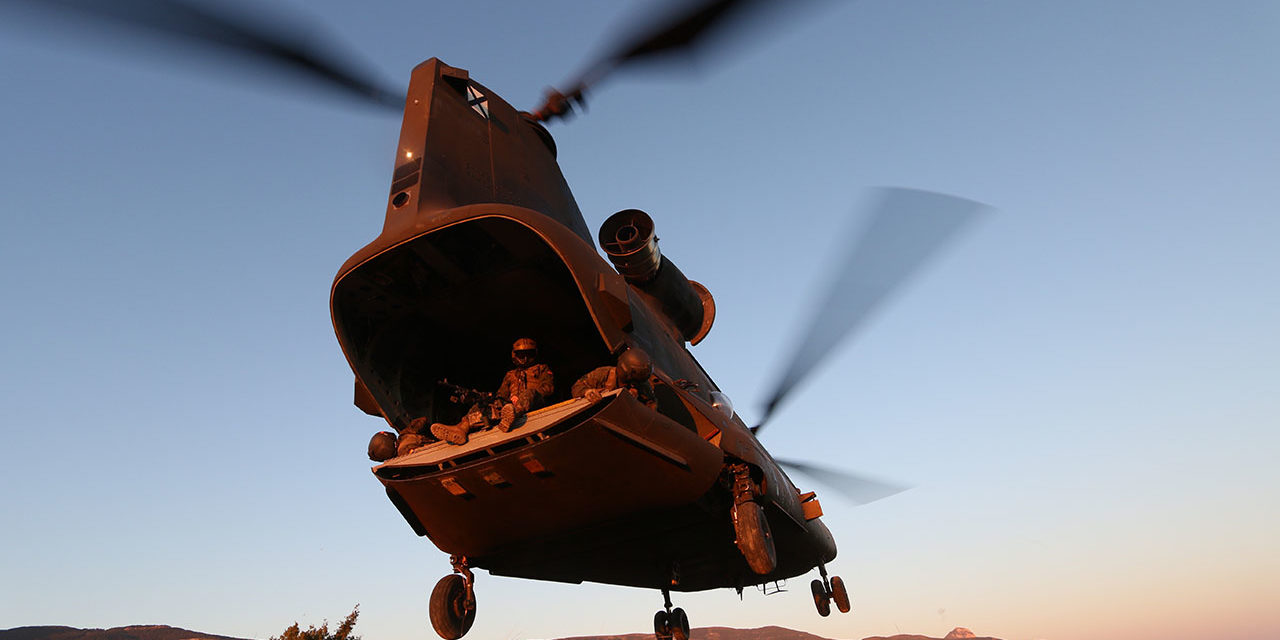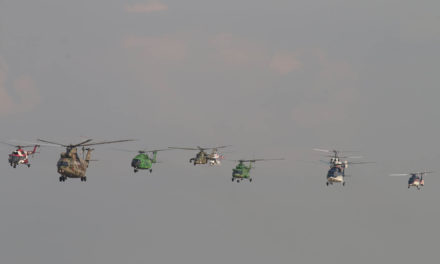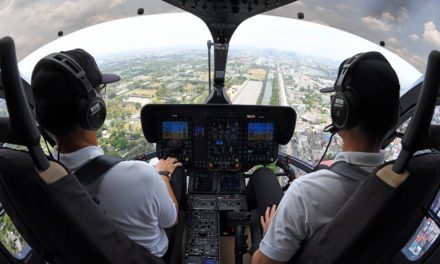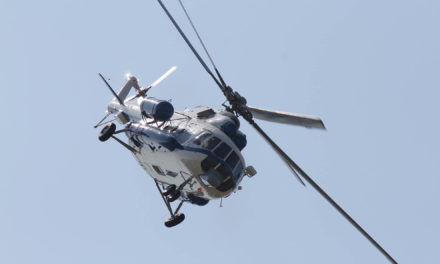Spain is a regular user of the CH-47D Chinook. The helicopter is still
impressive and the transition to the CH-47F will give even more weight to the
heavy transport capacity south of the Pyrenees.
Heat, a lot of heat. And dust, a
lot of dust. At the beginning of March, the land is already dry in the north of
Spain. Covering nearly 600 km2, the San Gregorio maneuvering ground, very close
to Zaragoza, is one of the largest in Europe. The armored tanks that
crisscross the tracks raise imposing columns of dust. The units of the Spanish
Army come one after another in San Gregorio for training, and the FAMET
(Fuerzas Aerómoviles del Ejercito de Tierra), the helicopter forces of the Army,
also deploys some aircraft there, from time to time. In early last spring, two
Tiger HAD, two NH90 Caiman and a CH-47D Chinook made the trip.
If the Chinook is the oldest of all, it remains with no
doubt the most impressive. Today, the training consists to carry with a sling
an Oto Melara model 56 howitzer. A 1200 kg howitzer is a featherweight for the
Chinook! The transport specialists spent the previous hour preparing the gun parts.
Anything that was likely to move during the flight was securely taped or tied
up. The slings have been put in place.
The Chinook approaches slowly,
raising in its wake dozens of cubic meters of dust. The six blades of the two
rotors stir the air in powerful snaps. The noise is unbearable and yet it
fascinates all the military people present. The question is the same for all:
how can such a machine hold the air, a few meters from the ground? The aircraft
lands and the team rushes into the cargo hold by the rear ramp. The helicopter
takes off again quickly, moves away from a few tens of meters and is positioned
above the howitzer.
In the hold of the helicopter, a
large hatch was opened in the floor at the point where the cables of the sling
hook. A prone flight engineer is lying near the gaping opening. It has a
breathtaking view of the howitzer, on the ground a few meters lower. Standing
on the gun, helped by his comrades, a soldier holds the ring which gathers the
slings. The challenge is to slip in a few seconds the ring in the hook that
hangs under the Chinook. Only guided by the instructions of the flight
engineer, the pilot positions the aircraft to the nearest centimeter. Under the
belly of the hovering monster, the soldier fights for a successful hang.
Despite all the modern technology, nothing but this muscular method has been
found to hang a load. After a few quick trials, it’s hooked! The soldier jumps
to the ground and moves away quickly from the gun. This looks like a Vietnam
war scene. The howitzer, the helicopter, the sling, a scenario that was already
taking place at the end of the 1960s. It was at this time that the FAMET received
their first Boeing Vertol B-V414 (official designation of the first exported
Chinooks), quickly followed by 13 CH-47C. In 2019, Spain still has 17 aircraft,
all converted to CH-47D and belonging to the BHELTRA V (Transport Helicopter
Battalion) located on the historic terrain of Colmenar Viejo, near Madrid.
Three of these aircraft have been
deployed in Afghanistan in the past years to
support the International Security Assistance Force (ISAF) operations.
Based on field Qual-e-naw, in the province of Herat in the west, the Spanish
Chinook operated day and night, in close coordination with the Italian Chinook
also deployed in the region . Operations in Afghanistan were difficult because
of the very high temperatures in the summer and the omnipresent dust posing
serious maintenance constraints. Under normal conditions, a CH-47D can lift up
to 7 tonnes without difficulty. But in Afghanistan, with temperatures exceeding
40°C in summer, lifting performance were reduced by two to three tonnes.
Moreover, the aircraft had received nearly a ton of armor and additional tanks
for the purpose of these operations.
From 2021, the CH-47D will be
replaced by more powerful CH-47Fs, offering a payload of about ten tons, and
equipped with a modern avionics. Enough to extend for a few decades the Spanish
adventure of an extraordinary helicopter, now used by 19 countries in the
world, 8 of which are part of NATO.
A long story
Helicopter military operations in
Spain began in 1953 with the supply by the United States of two Sikorsky
H-19Ds, two Hiller OH-23Cs and three aditional Cessna L-19A light observation
aircraft. All these aircraft were delivered from 1958 and wer under the spanish air force command. However,
the desire of the Spanish Army was to get its own helicopter force within an
independent aviation brigade. This has been done in 1965 with the creation of
the Aviacion Ligera del Ejercito de Tierra (ALET) as well as a light aviation
component of the first armored division. To equip these units, the United
States deliver a total of six UH-1B and as many OH-13 from 1966. Then two Bell
47 have been acquired directly from Agusta which manufactures them under
license. The helicopter force of the Spanish Army grows from this fleet of 14
aircraft. The building of bases and the creation of units give birth to a new
organization called FAMET (Fuerzas Aeromoviles del Ejército de Tierra). Today,
this powerful and modern force, has a hundred helicopters divided into six
operational battalions.
















